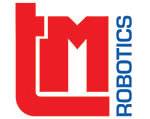The Importance of a Reliable Supply Chain for Robotics Companies
RoboticsTomorrow.com - Q&A with ElecroCraft
Sensorless Control of Brushless Motors
Choosing the Right Seal for Industrial Robotics
Everything You Want to Know About Alpine Conveyors
What is the Difference between Hexapod 6-DOF Alignment Systems vs Conventional Stacks of Stages?
How to Improve the Precision of Positioning Stages with ACS Dynamic Error Compensation
DC Motors as Generators
Interview with Michael ImObersteg, Future Robotix
Piezoelectric and Piezoresistive Effects in Robotics
Midwest Motion Case Study: Torque Transmission
Why Custom Robot Integrations With Rotary Index Drives Makes Financial Sense for a Variety of Manufacturing Applications
The Many Uses of Bellows
Mouser Electronics - Empowering Innovation Together
Making Parts for Robots
Records 46 to 60 of 65
First | Previous | Next | Last
Featured Product

Oriental Motor USA - Ideal for AGV/AMR Applications
Robotics and Automation - Featured Company

